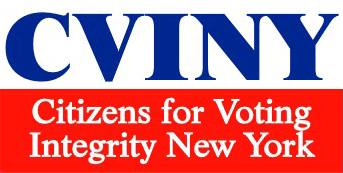Editorial: Preserve ballot integrity
The state’s highest court has a chance to shore up election law meant to guard against fraud.
By Times Union Editorial Board, Opinion
Oct 20, 2024
The latest court battle over how elections are run in New York brings to mind an observation from Winston Churchill: “Indeed, it has been said that democracy is the worst form of government, except for all those other forms that have been tried from time to time.”
The current battle — over who has control on local elections boards to validate or negate an absentee ballot — is ultimately about the integrity of the bipartisan system that has long been entrusted to run elections as fairly as possible. We look the state’s highest court to make the right choice – that is, to reject an earlier appellate ruling and safeguard the admittedly imperfect system we have.
The question at the heart of the case isn’t complicated: What happens when elections officials can’t agree on whether a signature on absentee ballot documents is legitimate?
Boards of elections engage in a bipartisan review of ballots to ensure that they are valid – that, for example, the person is a registered voter, and that the envelope containing the ballot is free of defects such as a missing signature or a wrong address. If the defects can be fixed, voters are given an opportunity to do so; if they can’t be fixed, the ballot is set aside for possible judicial action after the election.
In 2021, with many people wanting to make use of absentee ballots during the COVID-19 pandemic, the state Legislature changed election law to allow more use and, among other things, expedite ballot reviews. Republicans challenged the law expanding the use of absentee ballots; they largely lost, except for one point – how absentee ballots are handled when there isn’t bipartisan agreement that a signature is valid.
Before the 2021 changes, both the Republican and Democratic reviewers had to agree the signature was OK. But with the changes, if only one reviewer deems the signature valid, it’s enough to allow the ballot. And because the ballot is then put in with the rest of the ballots to be counted anonymously, there’s no further opportunity to challenge it. What’s more – and here’s where the law becomes downright absurd -- even if a voter says the signature isn’t theirs, that can’t stop the ballot from being counted as long as one official says it looked valid to them.
It's not doesn’t have to strain to see the potential for abuse here. Imagine an elections official forging absentee ballots, and then being in a position to unilaterally decide whether the ballots were valid. That’s hardly a stretch, given a case we saw in Rensselaer County recently, where a Republican elections commissioner was convicted of fraud for applying for absentee ballots without the voters themselves even knowing about it.
Unfortunately, a 3-2 majority of the Appellate Division of the state Supreme Court ruled that although the state constitution requires bipartisan representation when it comes to ballot reviews, it doesn’t explicitly require bipartisan agreement. That’s ridiculous, as Justice John Egan Jr. pointed out in a dissent in which he said that bipartisan agreement clearly flows from the principle of bipartisan representation. What would otherwise be the point?
The case is now before the Court of Appeals, the state’s highest court, where, stripping away all the legal fine points, it comes down to this fundamental question: Given two admittedly imperfect choices, which would the constitution’s framers have chosen – the new law in which a single political operative can unilaterally rubber-stamp fraudulent ballots, or the old system that allowed a single political operative to block a possibly suspicious one from being counted?
The point of the bipartisan system of elections administration and enforcement is for the two major parties to keep each other honest. It’s hard to see how a panel of learned judges could square this peculiar part of the new law with that vital goal.
